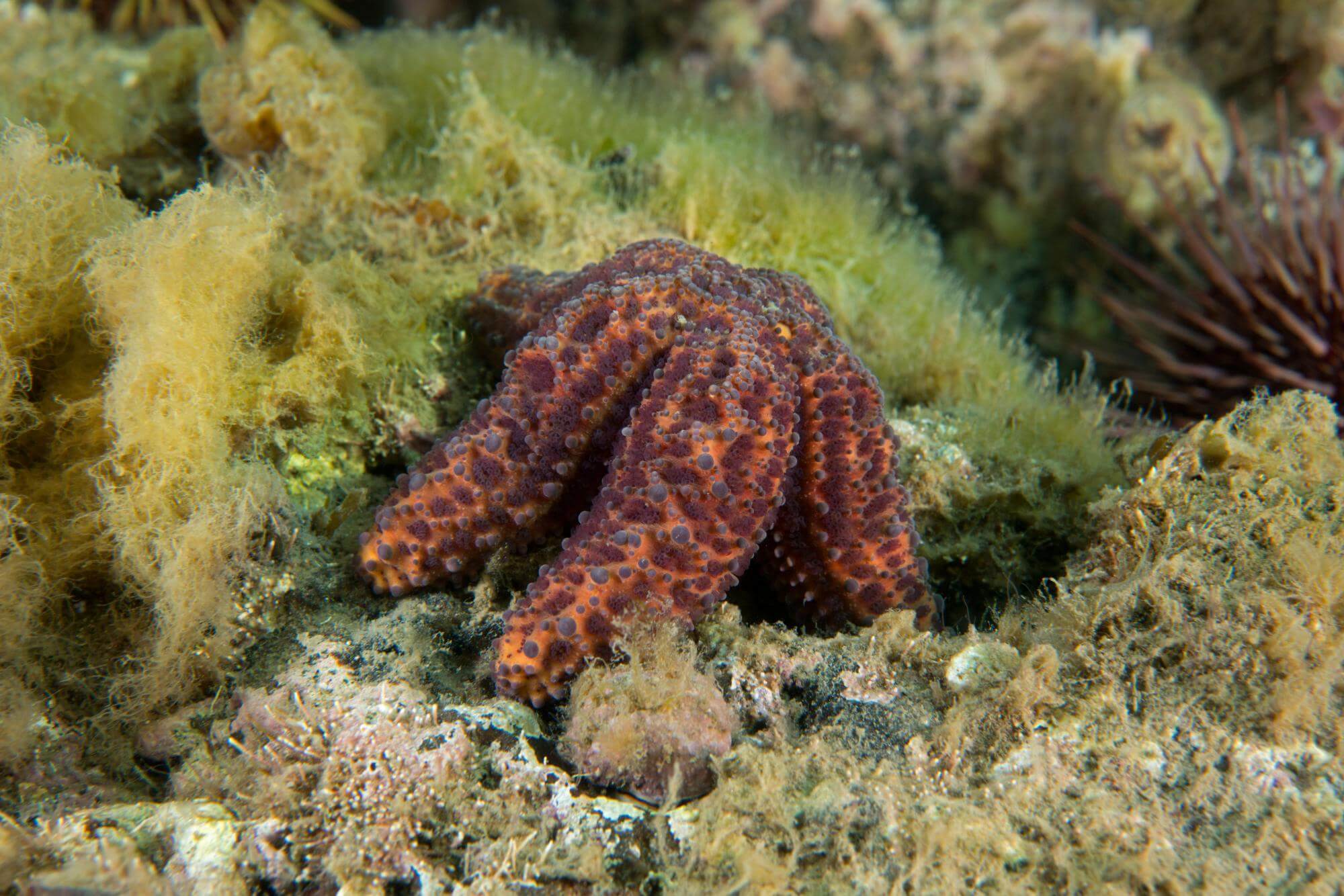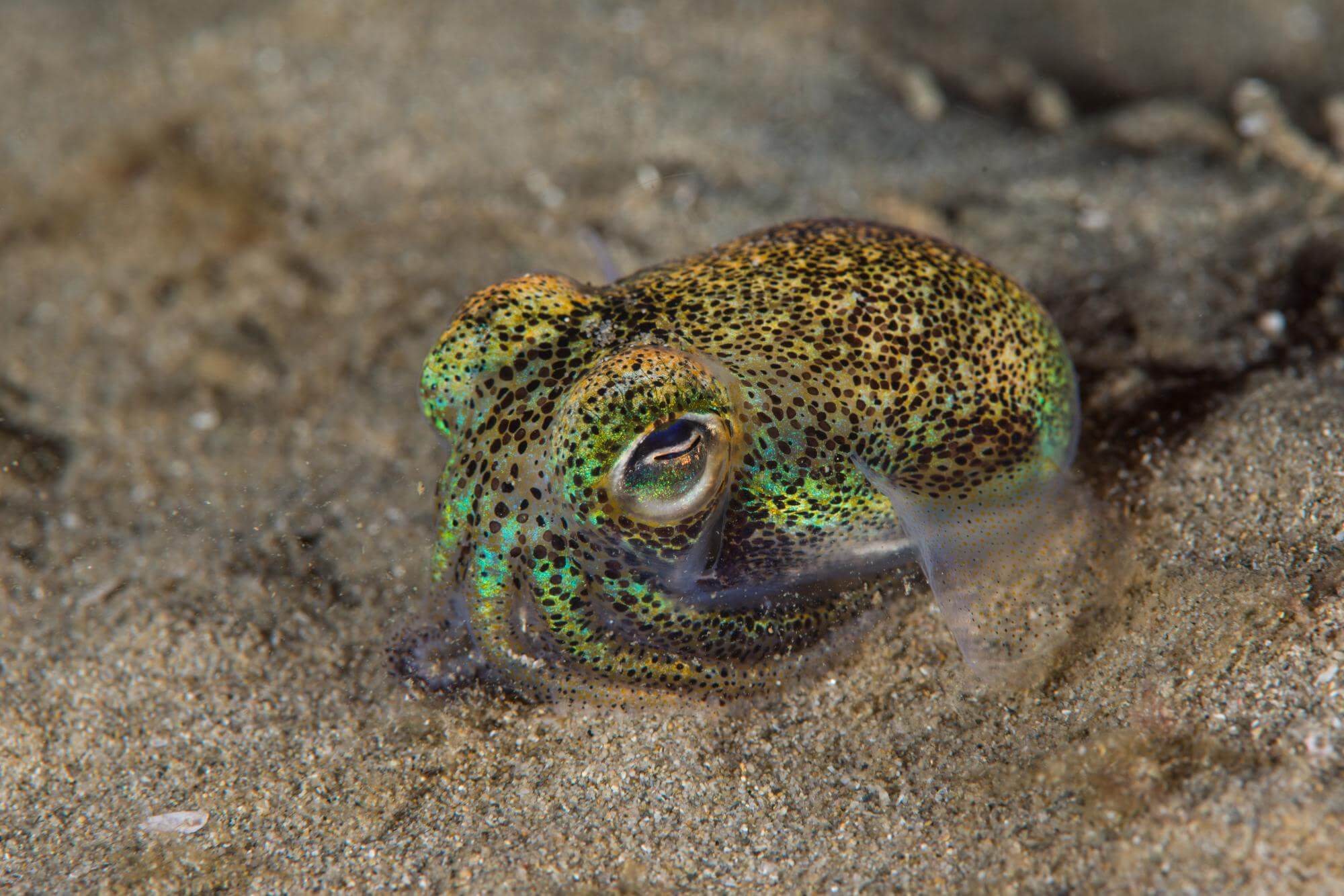Victoria’s marine and coastal environments are home to more than 12,000 plant and animal species, many not found anywhere else in the world.
Our report shines a light on the condition of birds, marine mammals, invertebrates on intertidal and subtidal reefs, coastal vegetation and fish.
Biodiversity is the variety of all life forms on the planet. This includes the different plants, animals and micro-organisms, their genes, and the land, marine and freshwater ecosystems that they are part of. Biodiversity is the variety of all life forms on the planet, across sea and land. Victoria's biodiversity provides the foundations of healthy ecosystems, such as clean air and water.
Marine mammals
Victorian waters are home to an amazing diversity of marine mammal species, including seals, dolphins and whales.
Australian fur seals
The health of Australian fur seal colonies can indicate trends in the general health of the marine environment. For example, we can learn about the presence of marine toxicants by taking samples from recently deceased seals. Colonies at Cape Bridgewater, Chinaman’s Hat, Phillip Island and Wilsons Promontory are major tourist assets. About 20,000 to 30,000 Australian fur seals live in the Seal Rocks colony at the western entrance to Western Port.

Dolphins
Dolphins play an important role in keeping the balance of life underwater, supporting the equilibrium of marine life. It is vital that the importance of dolphins in the ecosystem is recognised.
A stable population of about 100 dolphins lives in Port Phillip Bay. Western Port has a small but stable population of 20 dolphins. A population of between 60 to 100 dolphins also lives in the Gippsland Lakes. However, their numbers have recently declined. This is due to skin infections observed on several dolphins that have been linked with the bushfires in the region during 2019-20.

Birds
We noted declines in the abundance and diversity of some marine and coastal waterbirds and migratory shorebirds, particularly shorebirds which migrate across the equator. This is likely due to habitat loss on their journey in east Asia, particularly the Yellow Sea between mainland China and the Korean Peninsula.
Little penguins
The little penguin is the only species of penguin breeding in mainland Australia. The smallest of all penguins, they weigh 1.2 kg on average and stand up to 40 cm tall.
Their population trend is generally stable, with human disturbance and climate variability usually driving local decreases in population size. Little penguins thrive on Phillip Island and around the St Kilda breakwater area. Little penguin numbers on Phillip Island are estimated to be 32,000 while numbers at St Kilda are estimated at 1,400.
Today, Phillip Island in Victoria is home to the largest little penguin colony in the world. Phillip Island Nature Parks hosts the world-famous Penguin Parade. Visitors from all over the world travel to the island to see the little penguins. They watch from viewing platforms, boardwalks and untouched beaches as the penguins waddle home from the ocean to their burrows.

Macroinvertebrates
Macroinvertebrates are animals lacking a backbone and large enough to see without a microscope. Parks Victoria studied macroinvertebrates in Point Addis Marine National Park, which is a Marine Protected Area. They found consistent declines of blacklip abalone and turban shell over the last 15 years. Their research also suggests the Point Addis Marine National Park is providing a haven for the southern rock lobster to flourish.
Coastal ecosystems
Our report shines a light on the health of coastal ecosystems. A dedicated indicator focuses on conservation of coastal ecosystems in protected areas. We know that the protection levels for coastal ecological vegetation classes (EVC) vary. EVCs are the standard unit for classifying vegetation types in Victoria. Parks Victoria manages around 70% of the Victorian coast as national and state parks or coastal reserves. Analysis indicates that several coastal EVCs have limited data coverage in protected areas.

Coastal vegetation
Mangroves and saltmarsh are intertidal communities of plants that grow on the foreshores of estuaries and coastal lakes. These plants are adapted to salty conditions which most other vegetation cannot tolerate. Our report looks at their extent and how this has changed since European settlement. We rated the status of mangroves in Port Phillip Bay, Western Port and Corner Inlet and Nooramunga as good. Saltmarsh was rated as good in Western Port and Nooramunga Islands specifically. Corner Inlet and Nooramunga, Port Phillip Bay and Gippsland Lakes received a rating of fair.
Our report also presents findings on the condition of wetland and estuarine vegetation beyond those covered as standalone indicators. Port Phillip Bay and Corner Inlet and Nooramunga received a rating of fair while Western Port received a rating of good. In Gippsland Lakes, estuarine flora condition is rated as good. Wetland habitat extent received a rating of fair while the condition of paperbark-dominated wetlands is rated as poor.
Commercially and recreationally important fish and invertebrates
Black bream and dusky flathead have both been rated as having a poor status in the Gippsland Lakes. The recreational fishery for adult snapper in Port Phillip Bay is considered sustainable at its current level. However, there is a declining trend in the recreational fishery for adult snapper in Western Port. Recent strong recruitment in Port Phillip Bay is expected to reverse any declining biomass trends. Recruitment is the process of very young, small fish surviving to become older, larger fish. This will improve fishery performance in Port Phillip Bay and Western Port over the next five to ten years. King George whiting is expected to remain sustainable in Port Phillip Bay, Western Port and Corner Inlet. The status of blacklip abalone has been assessed as poor at a statewide scale.

Marine and coastal environment biodiversity case studies
- Once on the brink of ceasing to exist, Phillip Island’s little penguin colony is today the largest in the world. Learn more about the island’s conservation history and how the colony is faring today.
- Phillip Island also hosts one of the world's largest colonies of short-tailed shearwaters. Learn about how research and practical conservation initiatives are helping protect the shearwaters from light pollution.
- Mornington Peninsula National Park is an important breeding habitat for the threatened species of beach nesting bird, the hooded plover. Discover what’s being done along the coast to preserve their breeding habitat.
- The southern rock lobster is one of the species which calls Point Addis Marine National Park home. Find out more about Deakin University and Parks Victoria’s comprehensive monitoring of this Marine Protected Area.
Biodiversity indicators
The biodiversity indicators assessed include:
- Conservation of coastal ecosystems in protected areas; Saltmarsh; Mangroves; Other coastal, wetland, and estuarine vegetation; Species of conservation concern; Mobile invertebrates on intertidal reefs; Sessile invertebrates on intertidal reefs; Invertebrates on subtidal reefs; Commercially and recreationally important invertebrates; Commercially and recreationally important fish; Subtidal reef fish; Diadromous fish; Marine and coastal waterbirds; Migratory shorebirds; Piscivorous (fish-eating) birds; Little penguins; and Marine Mammals.
Statewide
Data source: Parks Victoria
Gippsland Lakes
Corner Inlet and Nooramunga
Nooramunga Islands
Corner Inlet and Nooramunga
Western Port
Port Phillip Bay
Data source: DELWP, Academic researchers
Corner Inlet and Nooramunga
Port Phillip Bay
Data source: Academic researchers, DELWP
Statewide
Gippsland Lakes
Estuarine flora
Gippsland Lakes
Wetland Habitiat Extent
Gippsland Lakes
Condition of Paperbark dominated wetlands
Corner Inlet and Nooramunga
Western Port
Port Phillip Bay
Data source: DELWP, Academic researchers
Statewide
Gippsland Lakes
Corner Inlet and Nooramunga
Western Port
Port Phillip Bay
Data source: Victorian Biodiversity Atlas
OMPA (other marine protected areas)
Port Phillip Bay
Data source: Parks Victoria
OMPA (other marine protected areas)
Port Phillip Bay
Data source: Parks Victoria
OMPA (other marine protected areas)
Port Phillip Bay
(North)
Port Phillip Bay
(South)
Data source: Parks Victoria, Reel Life Surveys
Statewide
Southern calamari
Statewide
Maori octopus
Statewide
Southern rock lobster
Statewide
Blacklip abalone
Statewide
Pipi
Statewide
Greenlip abalone
Port Phillip Bay
Commercial scallop
Port Phillip Bay
Short-spined sea urchin
Data source: Victorian Fisheries Authority
Statewide
Bluethroat and purple wrasse
Gippsland Lakes
Black bream
Gippsland Lakes
Dusky flathead
Corner Inlet and Nooramunga
King George whiting
Corner Inlet and Nooramunga
Rock flathead
Western Port
Snapper
Western Port
King George whiting
Port Phillip Bay
King George whiting
Port Phillip Bay
Southern sand flathead
Port Phillip Bay
Snapper
Data source: Victorian Fisheries Authority
OMPA (other marine protected areas)
Port Phillip Bay
(North)
Port Phillip Bay
(South)
Data source: Parks Victoria, Reel Life Surveys, ReefWatch
Statewide
Gippsland Lakes
Western Port
Port Phillip Bay
Data source: Academic researchers, DELWP, Melbourne Water
Gippsland Lakes
Corner Inlet and Nooramunga
Western Port
Port Phillip Bay
Data source: BirdLife Australia, Academic researchers, DELWP, Melbourne Water
Gippsland Lakes
Corner Inlet and Nooramunga
Western Port
Port Phillip Bay
Data source: BirdLife Australia, Academic researchers, Melbourne Water, DELWP
Corner Inlet and Nooramunga
Western Port
Port Phillip Bay
Data source: BirdLife Australia, Academic researchers, DELWP, Melbourne Water
Western Port
Port Phillip Bay
Data source: Earthcare St Kilda, Phillip Island Nature Parks
Gippsland Lakes
Dolphins
Western Port
Seals
Western Port
Dolphins
Port Phillip Bay
Dolphins
Data source: Dolphin Research Institute, Marine Mammal Foundation, Phillip Island Nature Parks, Academic researchers
More information
- View the full indicator assessment table
- Explore case studies
- Download the State of the Marine and Coastal Environment 2021 Report and view the interpretive website for the report.
- View Gallery of images

